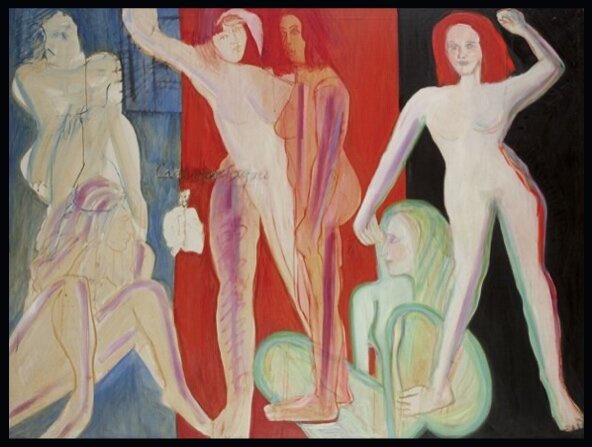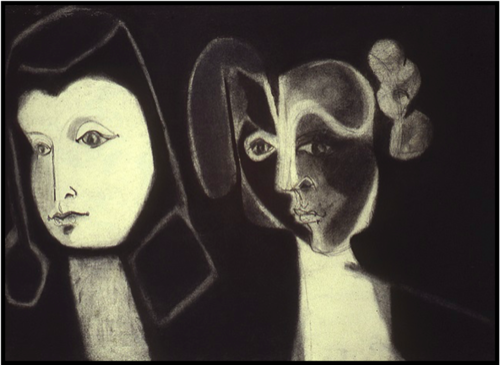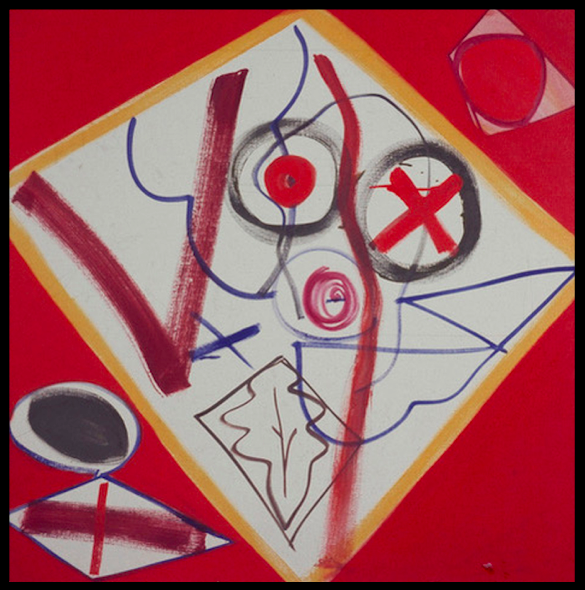A New York Gallery Is Resurfacing the Work and Career of the Long Overlooked Artist Fay Lansner, Who Studied With Hans Hofmann


Katie White

Over the past decade, the works and careers of many previously obscured women artists have rightfully been reconsidered by historians and garnered a bit of long-overdue acclaim.
From the Post-war era, the legacies of Lee Krasner, Elaine de Kooning, Grace Hartigan, Joan Mitchell, and Helen Frankenthaler have all been reassessed and bolstered in recent years.
Even so, many stories remain to be told, including that of Philadelphia-born painter Fay Lansner, a student of Hans Hofmann, who has remained largely unknown outside of scholarly circles.

Fay Lansner, Heads (1951). Courtesy of Keyes Art.
Part of Lansner’s anonymity may be attributed to her allegiance to a figurative style even during the height of Abstract Expressionism. From today’s perspective, however, her female-centered works are in sync with present pluralisms.
Now, in a one-month pop-up installation in Lower Manhattan, Keyes Art (which is based in Sag Harbor) is spotlighting Lansner’s legacy, showcasing her works alongside those of artists Nathan Slate Joseph and Lester Johnson.
Dating from the late 1940s to the ’60s, the paintings on view underscore Lansner’s singular style of bridging abstract signs, fragments of the female body, and bold colors in dream-like configurations.

Fay Lansner, Untitled (1949). Courtesy of Keyes Art.
Lansner’s life story adds to the fantastical mystique of her works. She was the daughter of Russian Jews who escaped Tsarist Russia and settled in Philadelphia. After starting her art education at the Tyler School of Fine Arts in Philadelphia, Lansner moved to New York City in 1948 where she studied with the famed Hofmann and took classes at the Art Students League.
Her marriage to journalist Kermit Lansner (who went on to become editor of Newsweek) would take her to Paris, where she worked with Fernand Leger and Andre Lhote, then back to New York and the Hamptons, where she befriends artists like Audrey Flack and Larry Rivers. She worked for many years in the 10th Street Studio Building and was a founding member of the collaborative Hansa Gallery space, where she had her first exhibition.
In 1971, Lansner co-founded Women in the Arts (WIA), an organization seeking to change both public and institutional attitudes toward women artists. In 1972, it staged an iconic protest outside of MoMA. Amid all of this, she raised two daughters, Gabrielle and Erica.
It was the confluence of these many roles, relationships, and responsibilities that gave shape to Lansner’s fragmented approach to figuration. Though small, the Keyes Art exhibition is an insightful window into the creative mind of the little-known artist.
Works by Fay Lansner can be seen at Keyes Art’s month-long pop-up at 151 Gallery Projects through Sunday, March 14.